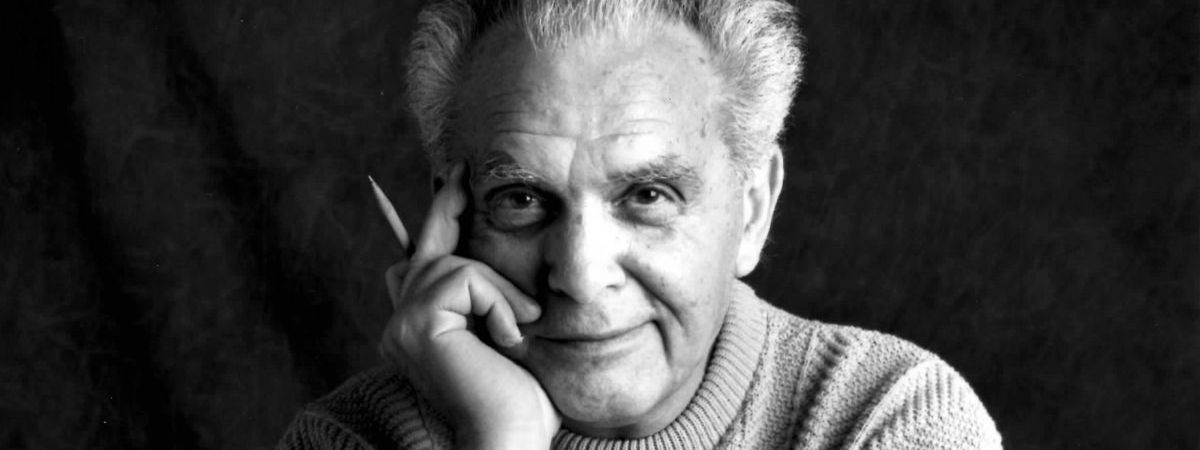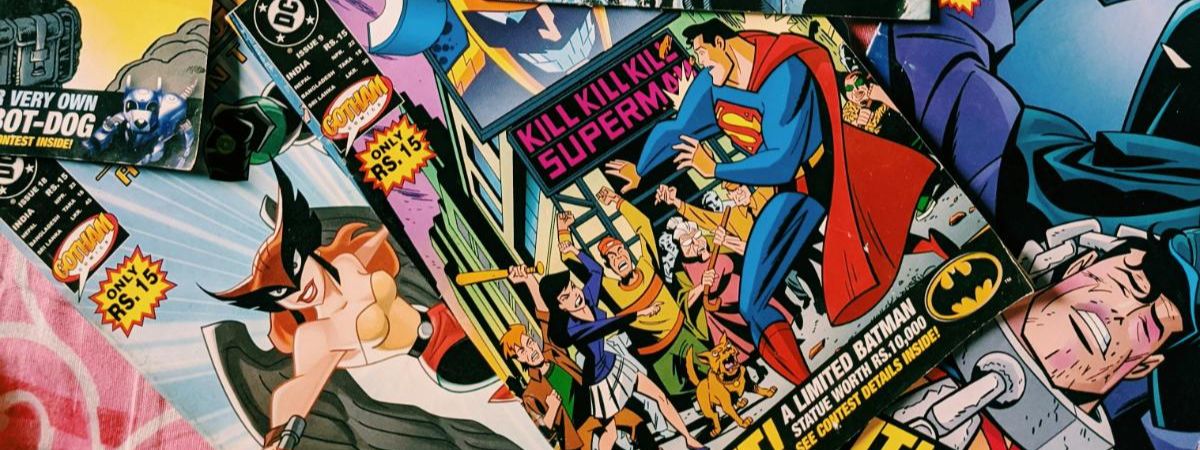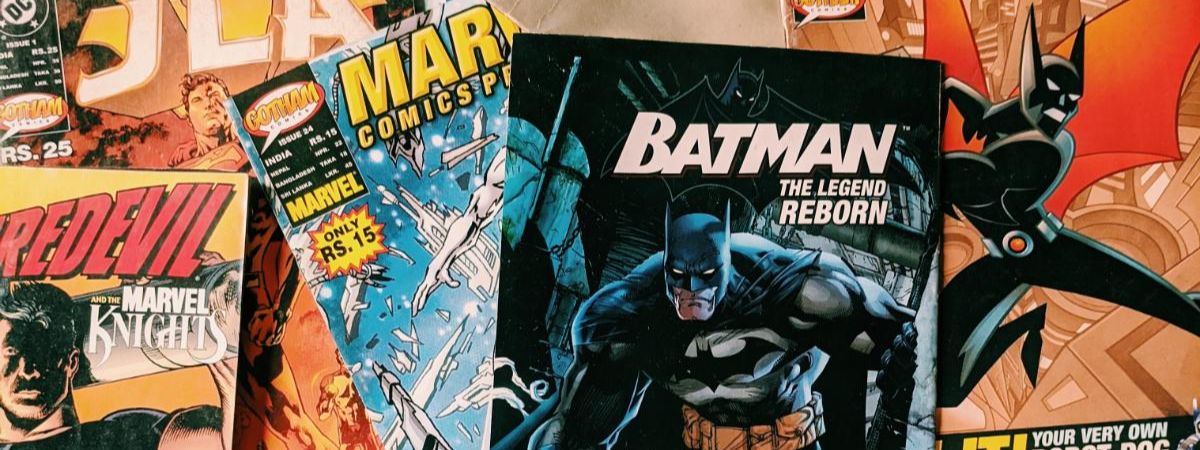Skip to the good bit
ToggleThroughout the mid-20th century, Kirby, alongside his collaborators, gave us iconic characters that have transcended the pages they were born on, becoming cultural landmarks.
We often recognize Kirby’s contributions through his distinctive art style – dynamic, powerful, and energetic. His innovative narrative techniques, including the famous “Kirby Krackle,” showcased his unique visual language that has influenced countless artists.
But it’s not just his art that stands the test of time; Kirby’s storytelling prowess established complex characters and intricate universes that are heavily celebrated and continue to inspire new generations of writers, artists, and fans.
Early life and career
Jack Kirby’s formative years shaped his future in the comic book industry. His creativity ignited during childhood, propelling him into his initial comic ventures and significant early collaborations.
Childhood and inspirations
Born Jacob Kurtzberg on August 28, 1917, in New York City, Jack Kirby was raised in the Lower East Side. He found escape from his modest upbringing in the realm of newspaper comic strips and movies.
Kirby drew inspiration from characters like Flash Gordon and heroes from pulp magazines, which sowed the seeds for his future creations.
Initial forays into comics
Our peek into Kirby’s beginnings of his career reveals a young artist eager to make his mark. By the mid-1930s, Kirby’s journey into professional artistry commenced, working under various pseudonyms before ultimately deciding on “Jack Kirby.”
His first foray was as an in-betweener for the Max Fleischer Studio, following which he dived into the burgeoning comic book industry.
Early collaborations
Kirby’s entry into comics led to his early collaborative work with Joe Simon. Together, they created the iconic Captain America for Timely Comics in 1941.
This partnership proved to be one of the most fruitful of Kirby’s career, leading to the creation of numerous characters and establishing Kirby as a significant force in the comic book world.
Major works and contributions
In celebrating Jack Kirby’s impact on the comic book industry, we honor his role in co-creating some of the most enduring characters and contributing significantly to narrative artistry.
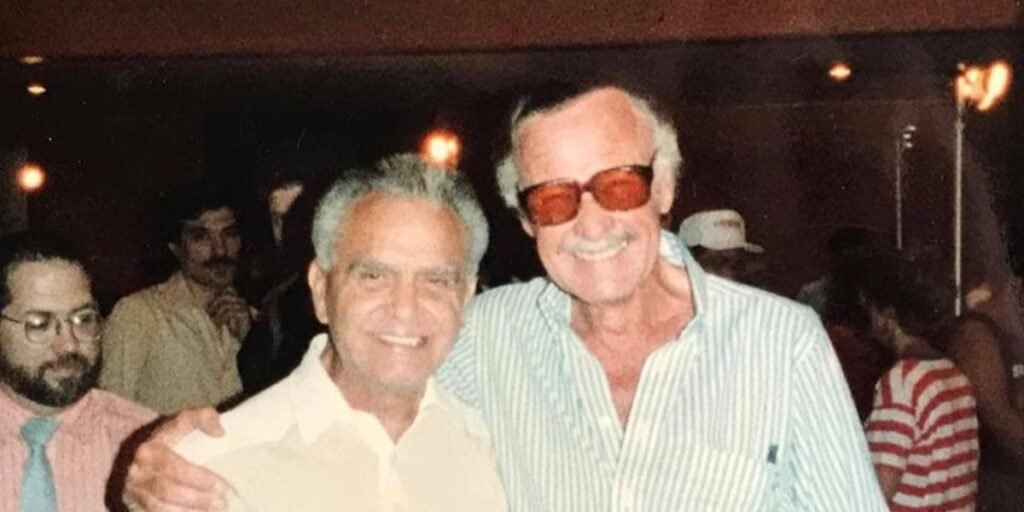
Co-creation of iconic characters
Jack Kirby, alongside other creators, brought to life a pantheon of superheroes that have become cultural touchstones.
The Fantastic Four, Kirby’s partnership with Stan Lee, ushered in the Marvel Age of comics. His creative fervor didn’t stop there; the duo also introduced the world to The Incredible Hulk, Thor, and The X-Men.
Frequently asked: What is a comic book run?
These characters have not only dominated the comic pages but have also gone on to star in blockbuster movies and Avengers comic book series that delight fans across generations.
Narrative artistry
Kirby’s contributions went beyond character creation; his narrative techniques were groundbreaking. His innovative use of splash pages and dynamic panel layouts revolutionized comic visual storytelling.
The “Kirby Krackle,” a way of depicting energy and cosmic phenomena, remains a testament to his unique artistic signature.
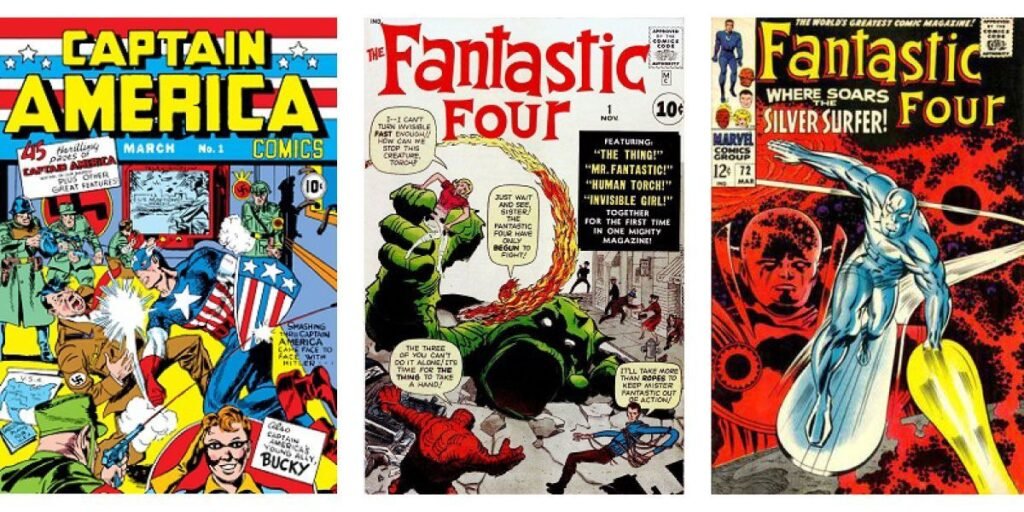
Marvel expansion
Kirby’s extensive work with Marvel and Spider-Man comics aided in its expansion during the 1960s. Beyond character creation, his storytelling contributed to the interconnected universe that has become a hallmark of Marvel.
His involvement in the Silver Surfer and Black Panther series, among others, set a standard for complexity and depth in comic book narratives.
Genre innovation
Away from superhero comics, Kirby also excelled in other genres. He worked on Westerns, romance, and even science fiction tales that showcased his versatility.
His latter work, like the “Fourth World” saga, introduced readers to a new mythos that was rich with themes of high fantasy and cosmic warfare.
Artistic influence and style
Jack Kirby’s style revolutionized comic book art with its intense dynamism, innovative panel layouts, and influential character designs. His storytelling techniques left an indelible mark on the industry.
Dynamic artwork
Kirby’s artwork is known for its high energy and motion. He often used exaggerated perspectives and action lines to convey movement. Characters seem to leap off the page, inviting us into a palpable, kinetic world.
- Perspective: Often employed dramatic foreshortening.
- Action lines: Used to show motion and energy.
Related read: Manga vs Western comics
Panel layouts and design
The design of Kirby’s comic book panels broke away from the conventional grids of his time. We see creative use of shapes and sizes, guiding the reader’s eye through the narrative in a rhythm akin to a cinematic experience.
- Shape Variation: Panels were not just square or rectangular but varied to match the action.
- Reading Flow: Guided the reader’s eye in a natural but dynamic manner.
Character design
Kirby’s character designs are legendary, giving us some of the most iconic and enduring heroes and villains in comics. His designs were bold and distinctive, providing instant recognition and conveying the core essence of the character.
- Boldness: Used strong, clean lines.
- Distinctiveness: Each character has unique visual elements.
Storytelling techniques
Our understanding of sequential narrative owes much to Kirby’s approach to storytelling. He used every element of the comic book form to tell a story that was both epic in scale and emotional in character development.
- Sequential narrative: Mastered the flow of the story across panels.
- Epic and emotional: Balanced grand plots with character depth.
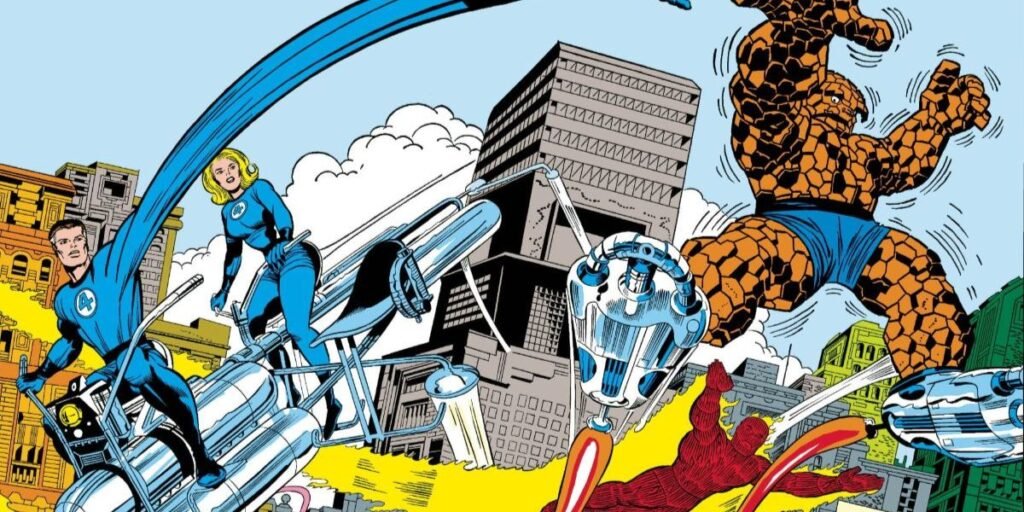
Legacy and impact
Jack Kirby’s work has left an indelible mark on the comics industry and popular culture. His innovative storytelling and dynamic artistic style have influenced countless creators and become deeply ingrained in the fabric of modern mythology.
Influence on future artists
We can see Kirby’s influence in the work of numerous comic book artists and writers who followed him. His approach to creating superheroes, with their complex backstories and larger-than-life personas, has become a standard within the genre.
Artists like Frank Miller, Neil Gaiman, and even filmmakers such as Zack Snyder have cited Kirby as a significant inspiration.
- Frank Miller: Known for Sin City and 300, Miller’s use of bold lines and cinematic storytelling mirrors Kirby’s style.
- Neil Gaiman: In works like The Sandman, Gaiman has embraced the mythic and boundless imagination evident in Kirby’s creations.
- Zack Snyder: Director of comic book adaptations like Watchmen, Snyder’s grand visual spectacles owe much to Kirby’s epic scale.
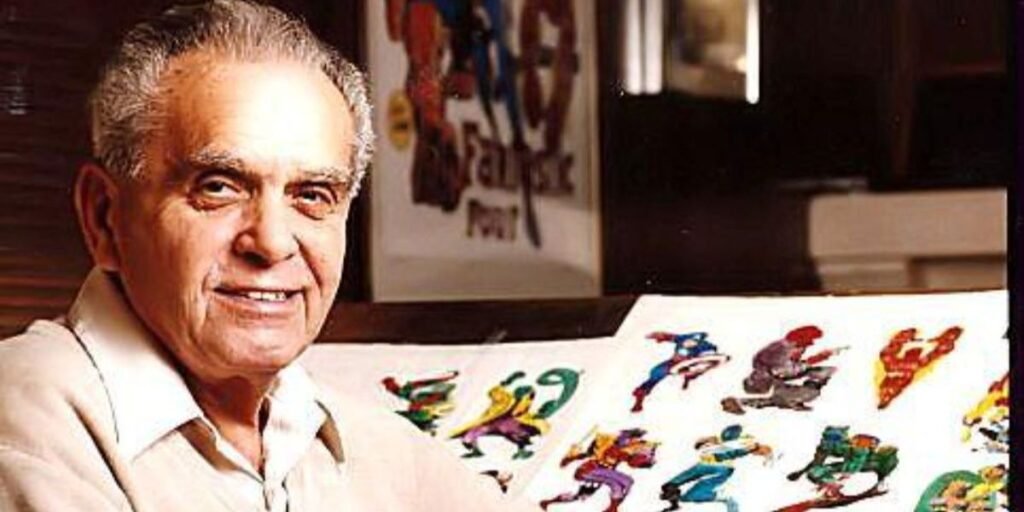
Cultural impact
Kirby’s characters and stories have transcended comics, becoming part of the global cultural zeitgeist. The Marvel Cinematic Universe (MCU), one of the most successful film franchises ever, is built on the foundation of Kirby’s characters, such as the Avengers, X-Men, and Black Panther.
His visual vocabulary has influenced not just comics but also movies, toys, and fashion.
- Marvel Cinematic Universe (MCU): A billion-dollar franchise featuring Kirby’s co-creations like Iron Man, Thor, and the Hulk.
- Merchandising: Toys, clothing, and posters featuring Kirby’s character designs are ubiquitous.
- Fashion: Kirby’s bold patterns and designs are often reflected in high fashion collections.
Recognition and awards
Over the years, our community has honored Kirby with numerous awards and accolades, recognizing his contributions to the medium and the arts. Some of his most notable awards include:
| Award | Year received | Significance |
|---|---|---|
| Will Eisner Comic Book Hall of Fame | 1987 | First inductee, showcasing his pioneering role. |
| Jack Kirby Awards | Named after him | Created to acknowledge his immense impact. |
| Bill Finger Award | 2008 | Recognizing his storytelling mastery posthumously. |
More about Jack Kirby
We’re here to explore some common questions about the monumental impact Jack Kirby had on the comic book industry.
Why is Jack Kirby so important?
Jack Kirby is often called “The King of Comics” for co-creating numerous iconic superheroes and for his innovative storytelling techniques. His dynamic art and storytelling reshaped the industry, setting standards that are still followed today.
What characters did Jack Kirby create?
Together with collaborators, Jack Kirby co-created legendary characters such as Captain America, The Fantastic Four, Thor, The Hulk, Iron Man, and the X-Men. He also co-crafted the expansive Marvel Universe, a cornerstone of modern comics.
What is Jack Kirby’s style?
Kirby’s art style was influenced by his experiences in World War II and by the pulpy science fiction and fantasy narratives of his day. He was known for his powerful, kinetic artwork that captured intense emotions and action.
How did Jack Kirby’s art influence comics?
Kirby’s approach to design and his use of bold, exaggerated anatomy set new visual standards for heroism and vigor in comics. His innovative panel layouts and dramatic splash pages greatly influenced cinematic techniques in graphic storytelling.
Jack Kirby’s journey from the streets of New York to the pantheon of comic book legends is a reminder of the transformative power of art. It is a call to all of us to dare to imagine, create, and share our visions with the world. Kirby’s work endures not only as a pinnacle of comic book artistry but as a beacon for future generations of creators.
In this spirit, we celebrate Jack Kirby not just as a cornerstone of comic book history but as a guiding star for creativity and innovation. His legacy is a vibrant tapestry of heroic tales and cosmic adventures that continue to captivate and inspire. Here’s to Jack Kirby, The King of Comics – whose creations will continue to thrill, entertain, and inspire future generations.

